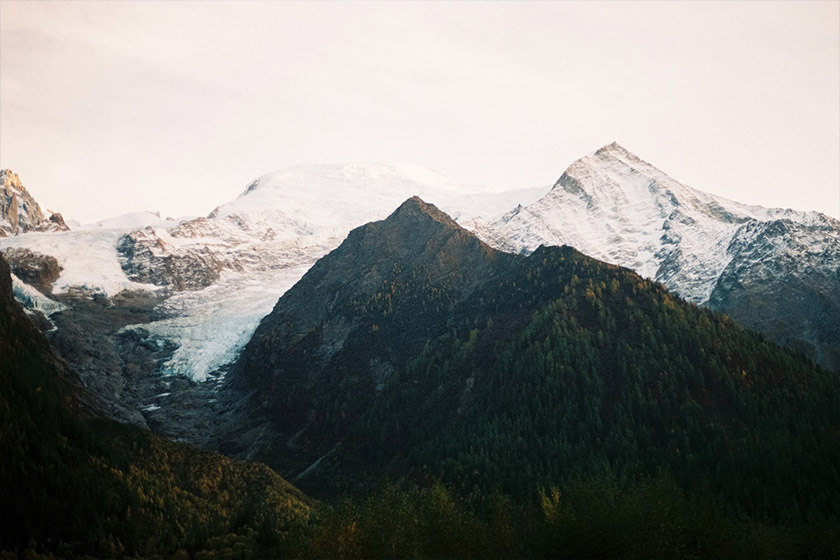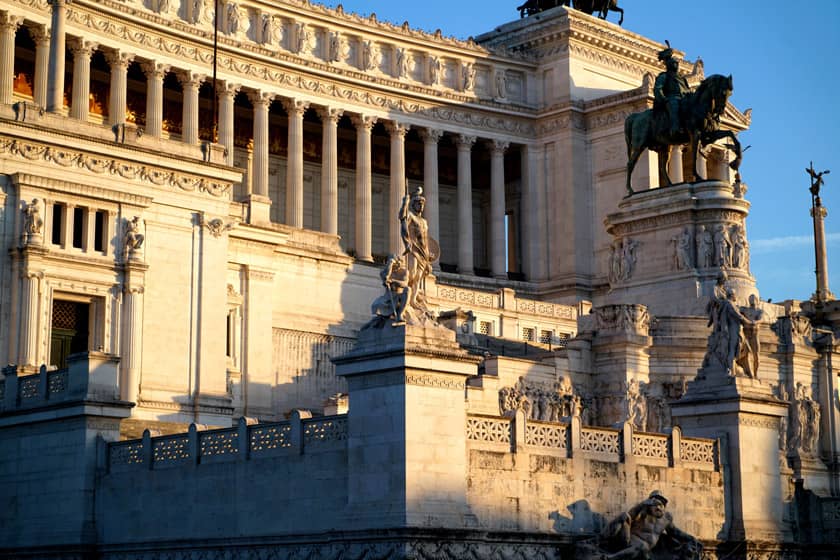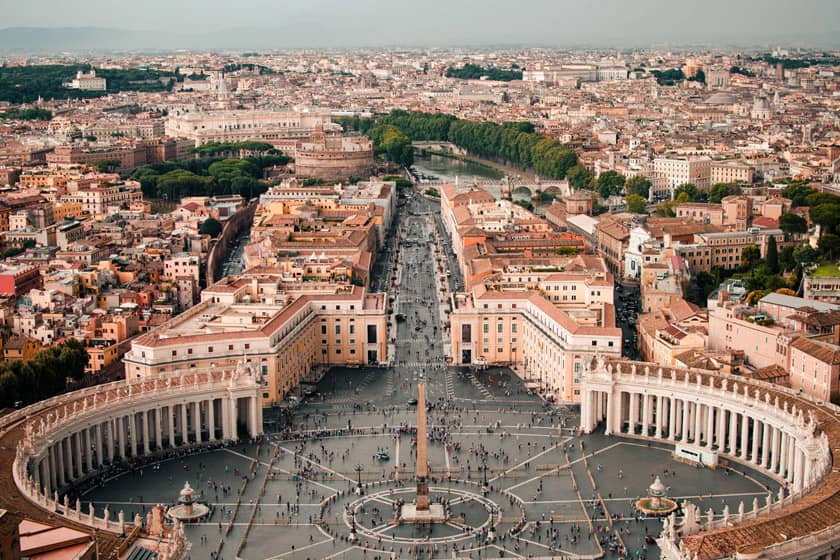
Italy (Italian Republic), is a peninsular state shaped like a boot as seen in the map of Italy with cities, located in the south-central part of Europe. It is surrounded by the Mediterranean Sea, which is divided into four smaller seas: Tyrrhenian, Adriatic, Ligurian, and Ionian. There are many islands surrounding Italy, the biggest ones are Sicily and Sardinia.
Interactive Map of Italy with Cities
General Geographic Information
Italy is located in Southern Europe. To the north, Italy borders France, Switzerland, Austria, and Slovenia, being bordered mainly by the Alps, including the Padua Valley and the Venetian Plain. To the south, it includes the entire Italian Peninsula and two large Mediterranean islands – Sicily and Sardinia – along with many other islets. The sovereign states of San Marino and the Vatican are enclaves in Italy, while Campione d’Italia is an Italian slave in Switzerland.
Although this cannot be seen from the map of Italy with cities, the total area of the country is 301,340 square kilometers, of which 294,140 square kilometers is dry and 7,200 square kilometers is water. Including the islands, Italy has 7,600 km of coastline and border, with 740 km of coastline in the Adriatic, Ionian and Tyrrhenian Seas. It has land borders with France (476 km), Austria (404 km), Slovenia (218 km), and Switzerland (698 km). San Marino (37 km) and the Vatican (3.4 km), both enclaves, represent the rest of the border length. Italy has a total of 1,836.4 square kilometers of land border.
Climate
Due to its large longitudinal extent (as seen on the map of Italy with cities) and the predominantly mountainous internal configuration, Italy’s climate is particularly diverse. In most of the northern and central continental regions, the climate has characteristics from humid subtropical to humid continental and oceanic. In particular, the climate of the Pad Valley is predominantly continental, with frosty winters and hot summers.
The coastal areas of Liguria, Tuscany, and much of the south best fit the Mediterranean climate stereotype (Csa in the Köppen Climate Classification). The climatic conditions in the peninsular coastal areas can be very different from those in the higher areas and inland valleys, especially in the winter months, when at higher altitudes it tends to be colder, wetter, and often snowier. Coastal regions have mild winters and generally dry summers, although, in valleys and plains, summer tends to be warm. Average winter temperatures range from 0° C in the Alps to 12° C in Sicily, and summer averages range from 20–30° C.
Mountains and Volcanoes
On the opposite side (as it can be seen on the geography map of Italy), Italy is crossed by the Apennine Mountains. On the Eastside, they merge with the Alps, forming a large mountain arch. The famous Dolomites close Italy on the Northside.
Mont Blanc
The tallest mountain in Italy is Mont Blanc (Monte Bianco), located at the French border. Its highest point reaches 4.810m, making it the tallest in Western Europe too. Its height varies every year, depending on the quantity of snow on its peaks.
Mont Blanc is a controversial subject for France and Italy. Both countries place it entirely on their territory, while in reality Mont Blanc is situated on the border. This controversy was settled with the agreement signed in Turin. The agreement places the border at the highest point of the peak.
Besides being famous for rock climbing, skiing, and mountain tourism, Mont Blanc is also famous for the Mont Blanc Tunnel. The tunnel has a total length of 11.6 km, linking the cities of Chamonix and Courmayeur. This makes the tunnel one of the most important trans-alpine transport routes.
Mount Etna
Italy is also renowned for its volcanoes. Mount Etna is an active volcano located in Sicily, near the cities Messina and Catania. Its highest point reaches 3340m, making it the tallest and most active volcano in Europe. It’s estimated that the volcano erupts every three months and that every 150 years the eruptions are so massive, that settlements are destroyed.
Due to its partial destruction of the volcanic cone, its elevation is controversial. The destruction caused the formation of roughly 400 secondary craters. The destruction area of the volcano covers an area of 1.250 km2.
Even though Etna is a very active volcano, this area is highly populated. One of the reasons being the increased fertility of the soil. The volcanic ash created by eruptions, make the soil perfect for cultivation vine, various fruit trees, and olives.
In 1981, the entire region was declared a national park. Ever since Mount Etna became a top-rated tourist attraction. Some of the activities available on Etna include alpine skiing, hiking, and there is also a funicular that can take tourists to the 2.600m mark. The funicular was destroyed by an eruption in 2002, but it was rebuild and reopened in 2004.
Mount Vesuvius
Another famous volcano is Vesuvius. It’s an explosive volcano situated near Naples, in a national park, in the Campania region. Its main cone height reaches 1281m, and the secondary cone (Mount Somma) reaches 1149m.
Vesuvius has low volcanic activity, leaking lava and emitting gases alternatively from time to time. It is now considered a low activity volcano, and it remains in history for its catastrophic eruption that buried the city of Pompei. The last major eruption was in 1631, but despite the low volcanic activity, a major eruption is still possible in the future.
Rivers and Lakes
The most famous rivers in Italy are Po, Adige, Piave, Savio, Tiber, and Alcantara. Some of them are known for their length while others for their scenery, activities, or history.
Po River
It is the longest river in Italy, the total length being 650 km and the widest section of the river measures about 500 meters.
An interesting fact about Po is that it has the highest count of catfish in the world. One of the main reasons for the high population of catfish is the climate. The number and size of the catfish attract many fishing enthusiasts. Thousands of fishermen visit this river each year and compete against each other, trying to catch the biggest catfish.
Adige River
Adige is an Italian river that springs from the Otztaler Alpen mountains and flows through the Northern part of Italy, reaching its destination, the Adriatic Sea.
It is the second-longest river in Italy measuring a total of 415 km long. The first section of the river has a torrential character, while near Verona, it flows through a plain having a more steady course with swampy shores. Towards the end of the river, it branches and flows into the Northern part of the Po delta in the Adriatic Sea.
Piave River
Piave is a river located in the northern part of Italy. Its spring is in Monte Peralba in the Alps. It is 220 km long and depending on the season, its flow varies.
During World War I, starting from November 1917, the inferior course of the Piave river became a front line for the Allied and Austrian armies. This conflict is also known as the Battle of the Piave River.
Nowadays, Piave’s valley is an internationally renowned wine region.
Tiber River
The Tiber is the second-longest river in Italy (406 km). It springs from the Apennines and flows into the Tyrrhenian Sea. Its main tributaries are Chiani, Paglia, Teverone, and Nera. The Tiber is also known for crossing Rome, which was founded on its banks about 25 km from the mouth of the Tyrrhenian Sea.
The original name of this river is Albula. According to Titus Livius, Tiberinus drowned in his attempt to swim across this river. So after this incident, the river Albula was named the Tiber.
The map of Italy with cities provides general information about the country, but if you are looking for an in-depth guide about a certain region, you can find out more by using the interactive map.
Italian Culture
Before the unification of 1861, Italy was divided for centuries, both politically and geographically. For this reason, Italy has a unique culture, consisting of various regional and national customs. During the Middle Ages and the Renaissance, Italy attracted an elite of artists, architects, and scholars. In this way, a varied heritage of works of art, music, and monuments was created.
Italy has the richest UNESCO heritage in the world. It contains objects of art, literature, and culture from various historical periods. This is largely due to the wide cultural influence and the Italians who emigrated to other countries.
It is estimated that Italy has about 100,000 monuments such as palaces, churches, fountains, museums, statues, etc.
Architecture
From an architectural point of view, Italy has many influences due to the fact that before 1861, the country was divided into several regional states. This has led to diversity based on the period and region.
One of the most famous architectural elements for which Italy is famous is the arches and domes. These elements are found in constructions from the period of the Roman Empire and even in constructions from recent history.
Among the most famous and spectacular architectural works is the Dome of Milan, St. Peter’s Basilica and the Colosseum in Rome, the Leaning Tower of Pisa, and the Cathedral of Florence.
It is safe to say that Italy’s architectural elements have been an inspiration for many architects worldwide over the past centuries.
Arts
In the last seven centuries, we meet initiators of important currents in history, such as the renaissance, which have enriched the culture through the philosophy of colors and fantasy.
With the schism of the Catholic Church through the Council of Konstanz in 1417, a new unitary artistic epoch developed: the Renaissance. Italy asserted itself as the main factor of European spiritual unity, and the Renaissance appeared with new attitudes and opinions about life. Man has positioned himself at the center of the world as the measure of all things.
The importance of this era is given mainly by the approach of perspective, the study of shadows and lights, but also the attention paid to human study. At the basis of this current is the philosophy that promotes humanistic thinking, discovering man as free, good, and responsible. This approach brings with it new discoveries and philosophical writings that still find relevance in the issues of contemporary life.
Leonardo Da Vinci
Leonardo Da Vinci (1453-1519) is the master of absolute imagination, a man of genius, and the main image of the rebirth. Mona Lisa still fascinates and arouses controversy today, being the most famous portrait of all time. But we must not forget works such as The Last Supper (1495-1498) in the church of Santa Maria Delle Grazie in Milan or the Sistine Chapel (1472-1483) of Michelangelo Buonarroti (1475-1564), created during the pontificate of the pope. Sixtus IV, after whom it was named.
Sandro Botticelli
The one who ends the Renaissance era is Sandro Botticelli, at the end of the 15th century. His painting is full of elegance and refinement, but it has a mysterious air that presents the dream world, of absolute beauty.
The renaissance current is of overwhelming importance in the history of mankind, it is a consequence of the Middle Ages, and it discovers man in a completely profound way. The ideas and works of this age will last in the world forever.
Overall, the map of Italy has lots of cities and places that are filled with history, culture, and art.
Top 10 Tourist Attractions in Italy
We have prepared a list of the top tourist attractions, destinations, and cities, that can be found on the map of Italy.

1. Colosseum
Who hasn’t heard of the Colosseum? Impressive construction is the symbol of Rome and the entire Roman Empire. Even if it periodically requires extensive consolidation processes and the number of tourists who can be in the colossal theater at the same time is limited, the Colosseum is certainly at the top of the tourist objectives that you must admire.

2. Venice
The unique city in the northeast of the country is one of the most picturesque and romantic destinations in the world. Its gondolas, beautiful canals, and unparalleled constructions will make you fall in love with this location on the spot. Among the tourist attractions in Venice that you should not miss are St. Mark’s Square, the Rialto Bridge, and the islands of Murano and Burano.
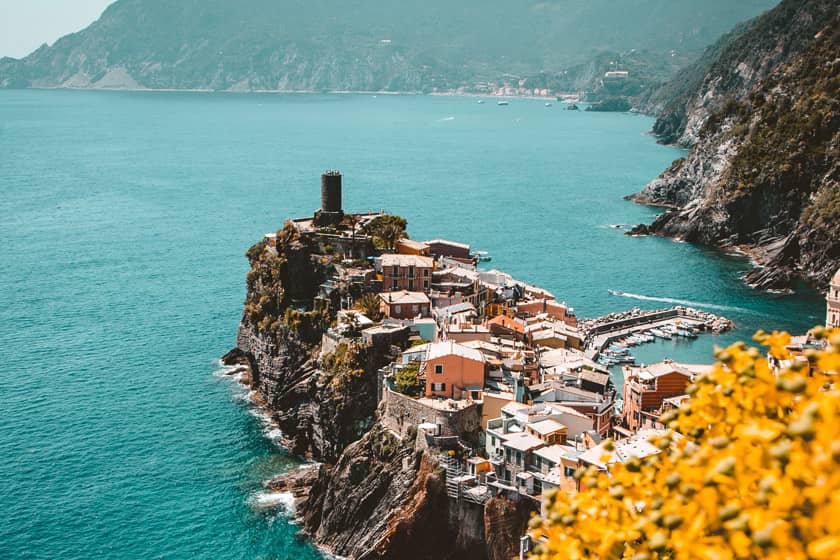
3. Cinque Terre
Pictures from the Cinque Terre region are making waves on social networks. The houses perched on the steep coast form, due to the vibrant colors with which they are painted, a dream landscape that is worth visiting at least once in your life. Contrary to popular belief, Cinque Terre is not a single village or town, but a region of 5 beautiful settlements, one more beautiful than the other. Their names are Riomaggiore, Manarola, Corniglia, Vernazza, and Monterosso.
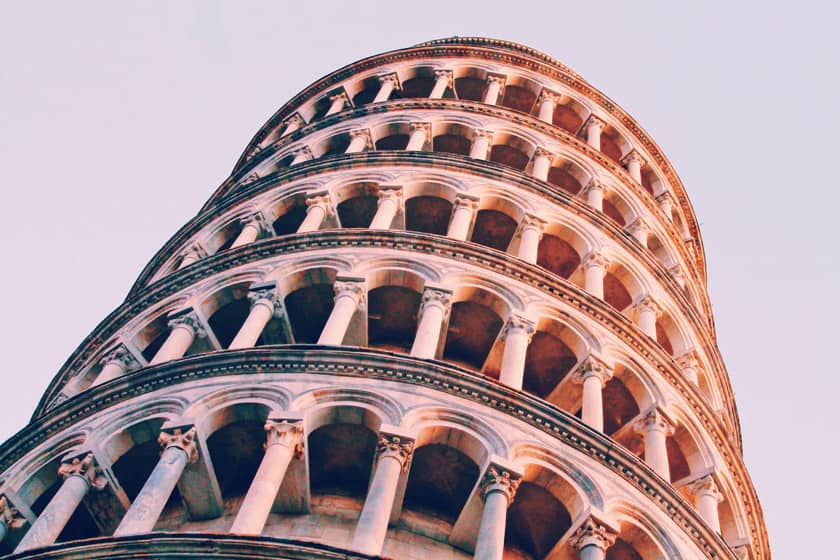
4. The Leaning Tower of Pisa
The Leaning Tower of Pisa is one of the most famous towers in the world. Known for its unusual shape and the funny pictures that surround it, the Leaning Tower of Pisa is the most important tourist attraction in the city of Pisa. What not many people know is that the Leaning Tower of Pisa is not the only leaning tower in Italy, in Bologna, there are even two towers, both with a high degree of inclination.
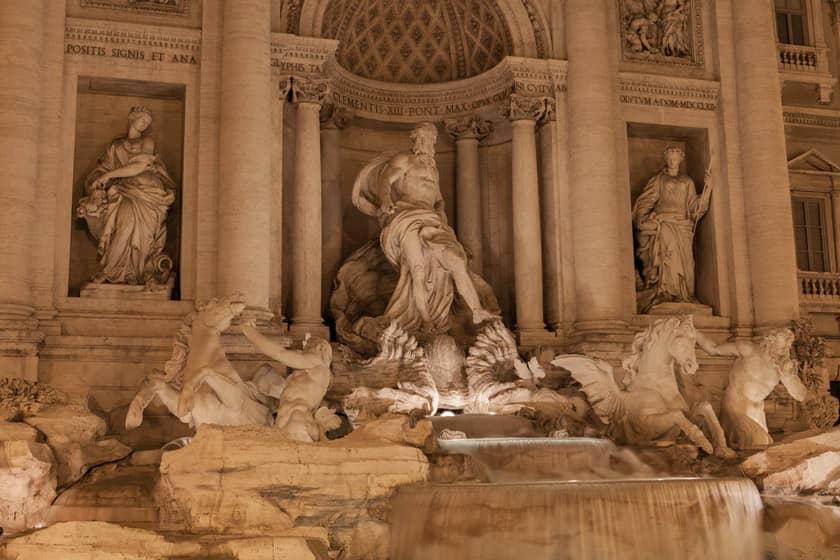
5. Trevi Fountain
Once in Rome, you will discover that not only is the Colosseum worth visiting, but there are many tourist attractions to visit. Among the most popular is the Trevi Fountain, an impressive building that serves as insurance for tourists who want to return to Rome. How? Well, it’s very simple. All you have to do is throw a coin over your shoulder in the water of the fountain, and according to the legend, you will definitely return to Rome soon.
6. The Vatican
The Vatican is the smallest state in the world, with an area of less than 1 square kilometer. Despite the small surface, there are a lot of works of art and valuable documents that are hidden from the eyes of the world in the Vatican Archives.
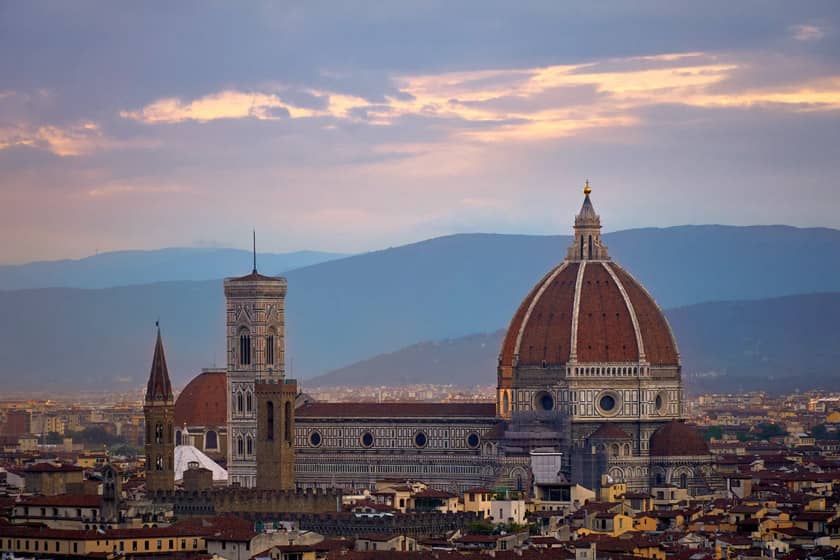
7. Florence Cathedral
Florence is itself an open-air museum. The facades of the buildings are loaded with splendid, carefully crafted decorations, the streets are often protected by huge arches, and the bridges are of rare beauty. Among the city’s symbols are the Cathedral of Florence, the Ponte Vecchio, and the Piazzale Michelangelo.
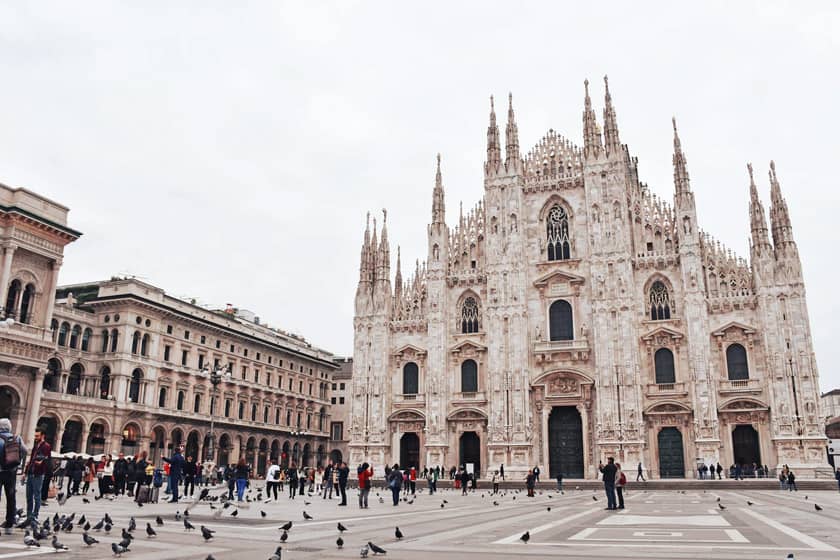
8. The Dome of Milan
Another imposing church that serves as a symbol for the city in which it is located, is the Cathedral of Milan. Known for its beauty and size, Milan Cathedral is one of the sights you can’t miss, no matter how hard you try. All the steps lead there and even if you want to, you can’t avoid it.

9. Pompeii
Pompeii, the Roman city near Naples, was destroyed in 79 BC. after the volcano Vesuvius erupted after several centuries of inactivity. The ruins of the city can still be admired today, Pompeii is an additional proof that not even the power of the Romans could stand in the way of the wrath of nature.
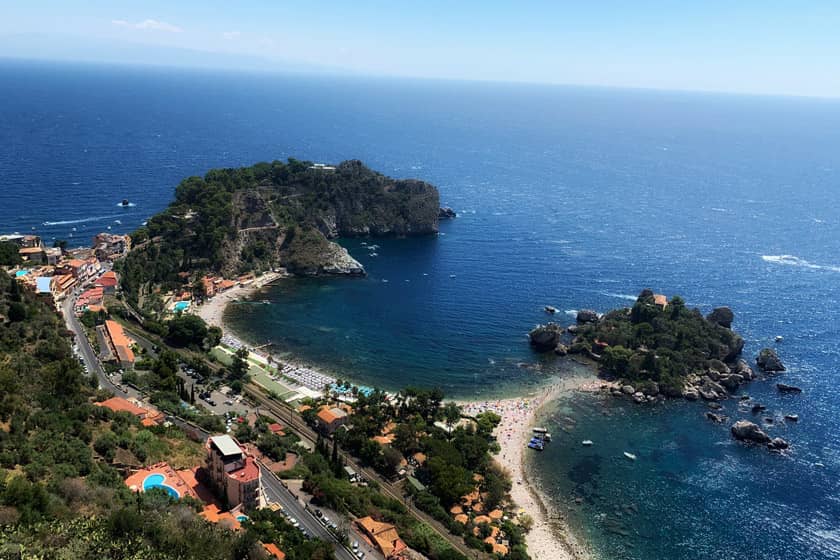
10. Taormina
We end our list of tourist attractions in Italy that you should not miss with Taormina, a beautiful city on the east coast of Sicily. The beauty of this place, the tranquility, and the wide beaches have made hundreds of thousands of tourists come here lately.
Travel Tips for Italy
When to go
Planning your trip to Italy depends on the activities you want to spice up your vacation with. Some cities from the map of Italy are renowned for their activities. Spring and autumn (April-June and the end of September-October) are the most suitable for visiting tourist attractions.
Summer (July-August) is extremely crowded in Italy, but it is the ideal time for beach lovers. Winter (January-March) is ideal for ski enthusiasts.
Large cities, in general (except Venice), are quieter in winter, with fewer tourists and lower prices. But at Easter, they are very crowded.
What to take with you to Italy
You can find everything your heart desires in Italy. Pharmacies offer a wide range of medicines, medical instruments, and personal hygiene items, as well as professional advice. However, it would not be bad to take with you the prescriptions of the medicines you need. The names of certain brand name drugs differ in Italy. Pharmacies are indicated by a green cross located above the entrance. It also doesn’t hurt to take a second pair of glasses or contact lenses with you, if you wear them.
The clothes depend a lot on the chosen destination, on the period when you plan to arrive in Italy and on the activities you want to experience. You will need elegant clothes only for luxury restaurants and casinos. But you don’t have to dress too casually either, because in general Italians are much more elegant than most Americans, Canadians, and Northern Europeans.
If you go out, try to be as elegant as possible. Also, in churches, choose appropriate clothing – it would be ideal for women not to wear low-cut blouses, shorts, or skirts that are too short. Another thing to remember is that, in the south and in rural areas, dresses must be conservative.
Take a sweater, even if you arrive in Italy during the summer, because the evenings are extremely cool. Also, come prepared for the rainy and cool days of the second half of summer. You can rent or buy climbing, skiing, camping, and other sports equipment, but it would be advisable to bring your own boots.
In Italy, the current is 220V, 50 Hz and the sockets have two (sometimes three) round holes. If you bring an appliance with you, you will need an adapter plus a transformer for electronics made in the USA.
Finally, don’t forget the most important things: passport, driver’s license, tickets, traveler’s checks, and insurance. Of course, you can also save this link to the map of Italy with cities, guides, and travel tips. It will come in handy for sure.
How to travel through Italy
By Plane
About 40 cities in Italy are equipped with airports: Rome and Milan are the main air nodes. Domestic flights are mainly operated by Alitalia, plus a number of other smaller companies, such as Meridiana Alitalia or Meridiana.
By Ferry
Combined transport ferries (passengers and cars) run between Reggio di Calabria and Messina in Sicily;
from Naples to Capri and Ischia; from Naples to Palermo (Sicily); from Genoa, Livorno, and Civitavecchia to various ports in Sardinia; between Piombino and the ports of the island of Elba; from Tuscan ports to the islands of the Tuscan archipelago, such as Capraia; and from Sicilian ports to the islands near the Sicilian coast.
More details can be obtained at the tourist information centers in the respective ports.
By Bus
Usually, trains are faster and cheaper than buses that connect cities, but in more isolated regions such buses are the only means of transport.
There are many companies, and departures are made from the central markets of large cities, in front of the station, or from bus stations. In general, tickets must be purchased in advance, from the bus station or from the nearest ticket center. Get interested in time at the tourist information center.
By Train
The train is the most pleasant way to get around Italy. The cost of travel is not expensive at all, and services and comfort have improved, especially in the case of the new speed trains.
Tickets can be purchased at the train station, online, or through travel agencies and are issued for first-class or second class. If you choose to travel by intercity train, you must pay an additional fee when you buy the ticket, or by train. If you choose Pendolino or Eurostar, you also have to pay an additional fee and reserve your seat in advance: you can usually reserve your seats even a few minutes before the train leaves.
Reservations are also made for other services, such as the sleeping car or the first or second class cot. Larger stations have special tickets for window seats for such services, so check your seat: look for the word “prenotazioni” (reservations).
Trenitalia company issues season tickets for several days, season tickets for groups of 2-5 people traveling together, weekend passes, and various tickets or discounted season tickets. For more information, you can visit the Trenitalia website.
Before you start traveling, you must validate all your tickets in the special cars on the platform and in the hall where the ticket offices are located. If you travel with an invalid ticket, you risk being fined.
If you want to travel more by train, then it would be recommended to buy a cheap brochure with the train schedule. It can be purchased from bookstores or from newsstands in railway stations.
By Car
The center of Italian cities is quite crowded, but in the rest of the country, the road network is very well maintained and signaled by road signs, from ordinary national roads (N) to “express” highways (where tolls are paid).
Sometimes you pay a flat fee, but you usually get a card from a vending machine at the highway entrance and then pay at a toll booth. There are also prepaid cards, which you can buy at gas stations on the highway (open 24 hours a day). In this way, you get rid of the congestion at the toll stations.
Gravel roads, known as “white roads”, are found especially in rural areas, but you can drive on them and are often marked on the map. They require a lower speed but are practicable.
If you want a physical road map, they can be bought from bookstores. The best maps are the Touring Club of Italy (TCI) maps.
Rent a Car
It is very easy to rent a car in Italy. International companies have offices in stations, in most airports, and in all major cities. The prices are quite high, according to American standards, so it would be more appropriate to rent a car through the travel agency, in advance. Cheaper arrangements can be made by calling local companies, or online.
Drivers must be over 21 years old and have a driver’s license to rent a car.
How to travel through Italian cities
Most historic towns and old centers are small enough to be explored on foot. In some cities, especially Lucca and Ferrara, you can rent bicycles. In other cities, you can rent scooters, but less experienced drivers should be very careful in the crowds of big cities, such as Rome (that can be found above on the map of Italy with cities).
By taxi
It’s hard to stop a taxi on the street. Most taxis are stopped at special stations, in the main squares, or in front of the station. On Sunday morning and evening, on holidays, to the airport and outside the city, you will pay an additional fee for luggage.
If you are going to take a longer trip, you can negotiate the price in advance. You can book the taxi by phone: the operator will give you the number and an identifier of the taxi. In this case, the cost will be higher. The tip is 10% or you can simply round the price of the trip.
By bus
In cities, trams and buses are orange. If you choose to travel with them, the procedure is the same throughout Italy. First, you buy the ticket from the special stalls. In some cities, including Rome, there are ticket machines on the streets. After boarding the bus, validate the ticket. Generally, getting on the bus is done on the back door and getting off on the middle doors. Often, in Rome or Florence, with a ticket, you can take several trips in a certain period of time (usually an hour and 15 minutes). Otherwise, a ticket is only valid for one trip.
One-day passes offer you an unlimited number of trips and are valid in Rome, Florence, and other tourist cities. If you are caught without a ticket by the controllers, you are liable to a fine.
By subway
In Rome and Milan, you benefit from metro transport. Subway stations and trains look sloppy but are generally safe. Although the network is not extremely extensive, the subway is an excellent means of transport for those who want to cross these cities from one end to the other as soon as possible. Subway tickets can be purchased from the same place as bus tickets, or from ticket machines in subway stations. In Rome, a bus ticket allows you to take a trip by subway, in a certain period of time. In Milan, you benefit from an unlimited number of trips, for the period included in the first 75 or 105 minutes from buying the ticket (depending on the type of ticket purchased). One-day passes allow you to make an unlimited number of trips, in both cities, by bus, tram, and subway.
Travelers with disabilities
Museums, art galleries, and public institutions throughout Italy have made great strides in accessing wheelchair passengers, but much remains to be done. Very few buses and trains are equipped with such facilities, and taxis, even less.
Many historic cities face such problems, especially Venice, which has a very large number of bridges, where access is by stairs. Only luxury hotels provide special rooms for travelers with disabilities.
In general, most hotels and restaurants will do their best to help people with disabilities.
More information can be provided by the Italian embassy or consulate.
Italy Regions and the capitals
- Abruzzo: L’Aquila
- Basilicata: Potenza
- Calabria: Catanzaro
- Campania: Naples
- Emilia-Romagna: Bologna
- Lazio: Rome ( Map of Rome )
- Liguria: Genoa
- Lombardia: Milan
- Marche: Ancona
- Molise: Campobasso
- Piemonte (Piedmont): Turin
- Puglia (Apulia): Bari
- Toscana (Tuscany): Florence
- Umbria: Perugia
- Veneto (Venetia): Venice ( Map of Venice )
- Friuli-Venezia Giulia: Trieste
- Sardegna (Sardinia): Caligiari
- Sicilia (Sicily): Palermo
- Trentino-Alto-Adige: Bolzano
- Valle d’Aosta (Aosta Valley): Aosta
Conclusions about the map of Italy with cities and regions
There are a lot of things to be said about Italy, that cannot be covered in only one guide or article. That is why, by using the interactive map of Italy, you can click on any region and explore the in-depth article about that specific region, its cities, and attractions. We recommend checking out our article about the most beautiful waterfalls in Italy.
You can find all the information about the cities and regions on the interactive map of Italy with cities at the top of this page.
Article Updated on February 13, 2022






